Well, as for railbikers the prospects don’t look too good at a first look. We are probably only 25 – 50 active railbikers on the Earth today and very few young ones are joining the crowd. Like the spotted owl we are truly an endangered specie (give us a protected habitat!). Railbiking may die out in 20 years or so from lack of bikers, but at second thought I don’t think so. As for the young ones they probably just don’t want to mix with us old guys. They might even be out there without us knowing about it anyway they will want do it their way perhaps with more technology involved. Another ground for recruiting in Europe are the thousands of people that try railbiking every year at rental facilities (there are a couple too in the US) – some of these must catch on and eventually become addicts.
Times
they are a-changing
Railbiking requires that three major components are in place:
A railbiker, a railbike, and some rail. (Yes, I thought that out all by myself).
This time I thought I speculate a little about the future of our beloved sport,
as defined my trivial way.
Arne Nilsson
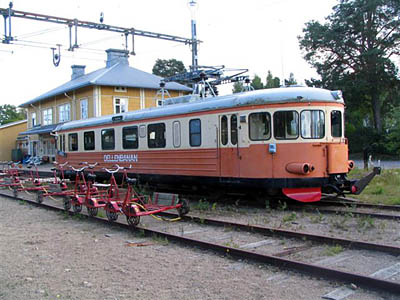
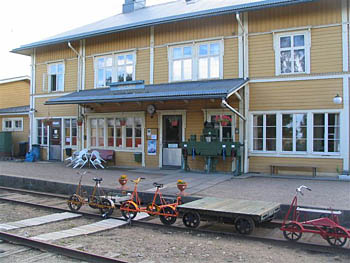
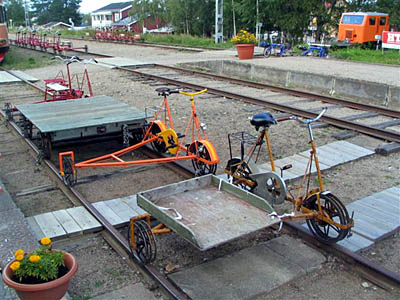
As for railbikes the original designs seems to have matured through constant refinement. However, we still wait for the single-rail railbike – that is a railbike without an outrigger. Myself I have two less radical ideas I’d like to pursue when time and money allow:
Imagine to silently glide down Nevada Northern comfortably leaned against the back rest of your seat. Pedal only when you want to.
For the third condition of railbiking we are in the hands of others, and I therefore spend a little more time on that. We are fortunate that our short time on Earth coincide with the era of railroad abandonment, when thousands of miles of track are being closed and given to us for pleasure. Soon however, only active rail will remain in any quantity, at least in our own countries. Our favourite style of railbiking, where we conquer a never before ridden stretch of steel, will soon be a rarity. We will simply have to find new ways to get access to rails. Here is a short summary of alternative sources we already are using to some degree. Some of these may become the standard way to go in the future:
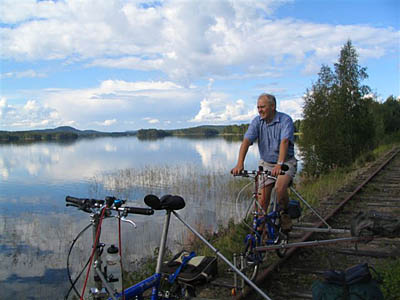
1. Dedicated rail for railbikes and other forms of private light rail vehicles. In the US I know of two such places, one in the Central Valley not too far from Sacramento, and one in Wolfebory Massachusetts. The former is privately owned and charges a fee for usage. The latter was free when I was there in 1997.
2. Abandoned rail in developing countries. These countries are in the beginning of their abandonment phase. I think of countries in former Communist Europe, South America and perhaps South Africa and India. To ride these lines requires serious research and planning (a lot of fun!). The casual railbike trip we are used to now becomes more of an expedition, best done in a group of bikers perhaps with a local guide.
3. It should be possible to more often make friends with Museum- or tourist railroads to use their rail during non traffic days. The same is true for railbike rental facilities. These people share our love for rails and once we understand each other this should be a realistic and major opening for us. We can pay for the use, help out with picking litter and clear brush and be more or less active members of these clubs. We could let the club use one of our railbikes. These lines are often very scenic and they are long lasting! You must however be a bit diplomatic when you approach club officials to get beyond their initial reluctance to think new and just say no.
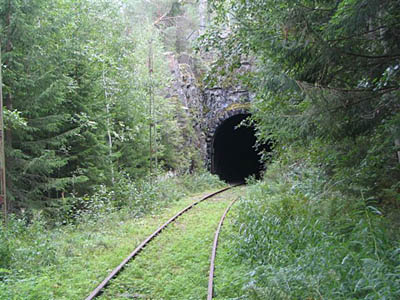
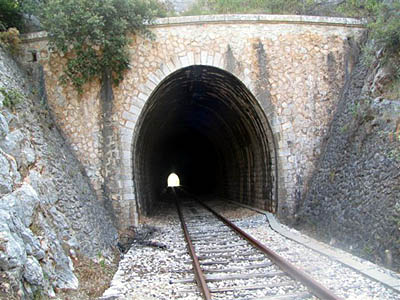
Thanks to such diplomats I have done this form of railbiking in Carrizo Gorge. Together with many of you, thanks to the Vander Vens’ and Dick Smart, in three places in Washington State thanks to Michael Rohde, in France thanks to my brother Ake, and in a handful of places in Sweden. In September my brother and I invited ourselves to Dellenbanan (www.dellenbanan.nu) in Sweden and were very well received. The accompaning photos are from this 60 kilometre long railroad.
A railroad that I would love to visit for instance is Cumbres and Toltec in the Rockies (www.cumbrestoltec.com). Who volunteers to approach them?
4. We could perhaps do as the speeder people, that is come out in the open and play by the rules of the railroad companies. We would travel in groups on well planned tours escorted by a high-railer from the railroad. This alternative has a couple of question marks, at least in the US. I doubt that the railroads would be interested. We are too few to represent a business opportunity. Furthermore there is no official safety standard for railbikes, so liability would be an ever ongoing issue. Since American railroad companies won’t deal with any outlaws, this option more or less precludes us from also riding on abandoned track in America, which we will want to do as long as they exist. In Sweden and perhaps Europe as a whole the long time source of rails already seem to be the museum lines.
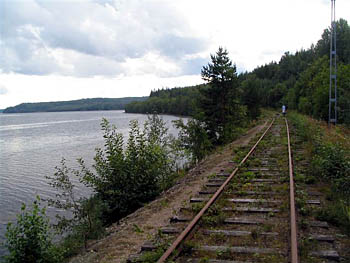
Well, folks these are some of my thoughts. What do you think about the future? Let us know through the Insider!
Arne recently sent a link about commercial railbiking sites in Europe. These sites are fascinating and real eye-openers on the popularity of railbiking in Europe. Text is of course foreign, but the sites are well worth visiting. http://www.draisine.de/Dds-bn/Adressen1.htm
There are other European sites listed on the Index page.
A note from Peter
Arne's thoughts are very timely. Abandoned lines are becoming fewer and farther in between. Many of the lines we have recently ridden are slated for salvage, and in one or more case, possible rejuvenation. I have followed up with some of my own thoughts and hope many of you will add yours also. Please visit Times Two.
Keep going - you're not done yet.